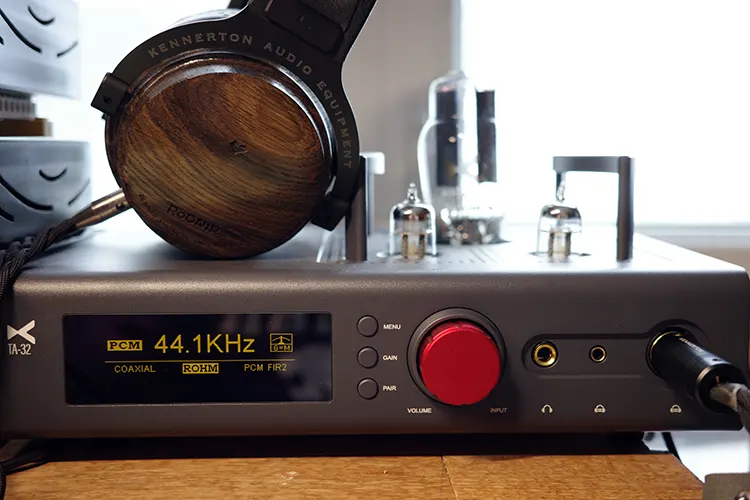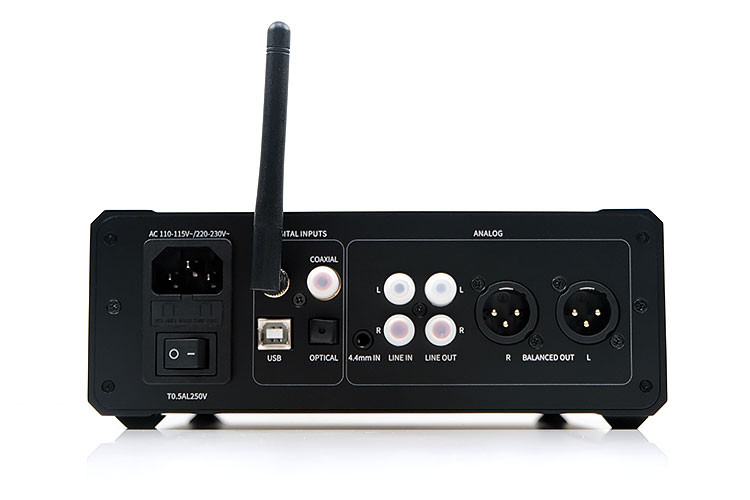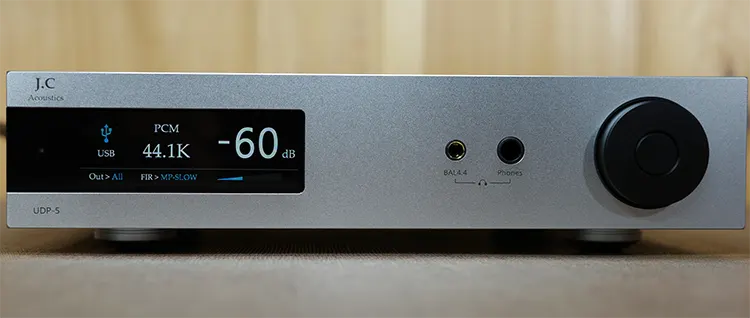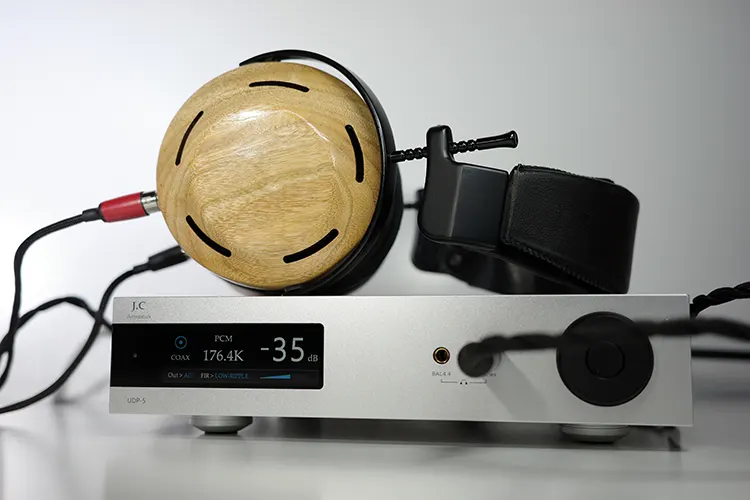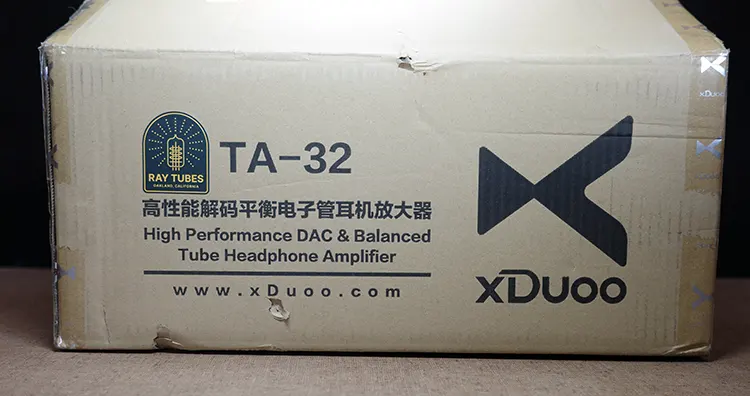Synergy
Power
The xDuoo TA-32 is deathly quiet across all platforms used, as it should be. It had no trouble driving my hardest-to-drive headphones, either.
The 3000mW through either the 4.4 or XLR balanced shows the TA-32 means business. The quiet background, no matter the source or listening device, also shows that power isolation is done properly, with no electromagnetic feedback (as I expected).
The delivery of that power was a bit “less insane” than the TA-30. By that, I mean there is a more usable headroom involved with the volume, as opposed to the “all or nothing” aspect in the venerable TA-30, which I still like quite a lot.
Pairings
I found the TA-32 worked as expected. The SJY Horizons were the hardest to drive, and I regularly had to move close to 70-80, out of 100 on high gain, to attain good listening levels.
This showed that even hard-to-drive units can function well, promoting a thoroughly engaging sound. With deep-reaching bass and a near-holographic listening experience, the Horizon was a treat of a listening experience.
The Kennerton Rognir can be a polarizing listening experience for many. Using it through the TA-32, I found the synergy to be top-notch. I was never left wanting for sonic tranquility or power.
Coming across as vibrant, I changed to the RCA 5U4G rectifier for a more subdued listening experience, more in tune with my listening style.
The Campfire Audio Supermoon and Dark Star IEMs used promoted an engaging listen, too. The deep-reaching bass of all three was had, countering the xDuoo rectifier tubes’ lack of “deep” reaching bass quite musically.
These paired especially well with the Oppo BDP-83 and CD music, promoting a transient response, which was thoroughly engaging, musical, and natural.
Pairing with the Absolute 4Ps was a trial in acceptance. The speakers themselves are studio monitors, and as such, promote a vibrant character that can quickly overcome your senses with high-end detail retrieval.
To counter this, low gain was used, instead of raising the volume when necessary (which wasn’t often) to accommodate the source music. The sonic qualities present made for an engaging listen, but required an attentiveness that may be off-putting to some.
Last but not least, a pre-amplifier in the McIntosh system allowed for a thoroughly modern DAC to utilize its qualities while streaming. Of the two, I preferred the HiBy R4 for its more engaging musical tonality, as opposed to the more analytical response from the FiiO JM21.
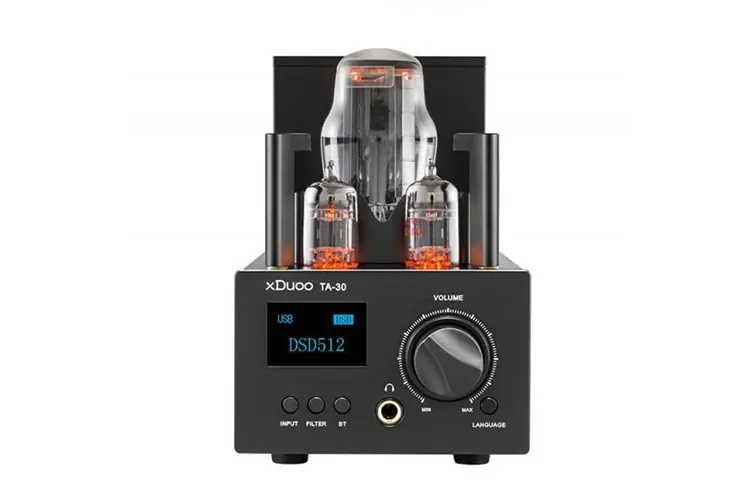
Select Comparisons
xDuoo TA-30
Features
The xDuoo TA-30 is a tube headphone amplifier that outputs 3000 mW of power and can easily drive most high-end headphones. It comes with several input interfaces, including USB, coaxial, and OPT, while supporting Bluetooth 5.0 decoding as well.
The DAC used in the TA-30 is the ES9038Q2M, which also comes with a built-in Time Domain Jitter Eliminator delivering a DNR of up to 129 dB and a THD + N of -120 dB. The TA-30 includes the 5Z3P and ECC82 tubes that process the audio and produce a sweet, refined sound.
The power can come across as brutal, with little headroom in the TA-30, whereas the TA-32 shows years of refinement. The power delivery between the two is quite different, and it shows. But much like the TA-32, tube rolling can occur with a positive effect.
Design
At only 29 x 11 x 17 cm and weighing 3 kg, it can be easily integrated into any office or living room. It is much heavier than it looks, thanks to the oversized power transformer that is staying on top to better dissipate the heat and move the magnetic field farther away from the audio circuitry.
The TA-32, conversely, is 31 x 24 x 17cm, with a weight of 11.46 lbs (5.2kg), nearly twice as heavy, and three times the width.
The cases of both amps are made out of machined aluminum alloy, reducing electro-magnetic interference and also working as a giant heat sink. Carrying a very industrial look to it, the TA-30 won’t win any glamor contests, where the TA-32 might.
Tube amplifiers generate a tremendous amount of heat, and the TA-30 is no different. The TA-32 runs much cooler, showing how xDuoo has improved the heat-dissipating technology.
Performance
I have mentioned several times that the TA-30 is insanely powerful. And with untamed power, to me. The equivalent of a wild bronco before being broken in.
And that break-in period for the TA-30 would be switching to the RCA 5U4G rectifier and RCA ECC82 tubes. The OG tubes were too grainy for my taste, and tube rolling is half the fun with critters such as this.
Once changed, that untamable sound was quelled. A bit. Vibrantly warm, the tube goodness came forth with a degree of severity that was still unsettling if the volume knob was turned too far north.
The power delivery of the aftermarket tubes on the TA-32 has tamed some of that wildness, which is much appreciated.
FiiO K9 Pro ESS
Features
The K9 Pro ESS FiiO uses a fixed dual-mono ES9038PRO DAC implementation in current mode.
This is the same chipset used inside their (then) flagship M17 DAP, and in the same dual-channel configuration. The TA-32 conversely uses the Rohm DAC, with an optional AKM for additional cost.
8 TI OPA1612 op-amps run the power with a built-in linear PSU to quell electromagnetic interference, and 2.1W balanced at 32Ω load.
You should get some improvements in SNR (up to 129dB) and a lower THD+N (<0.0025%), as well as more subjective elements using balanced mode in terms of channel separation and lower noise floors.
You also get up to DSD256 and PCM 32BIT/384kHz, which might feel a bit behind the TA-32, which can do up to DSD512 and 768kHz.
On single-ended, the K9 Pro offers a fairly healthy 1.1W at the lowest load level, 16Ω, which only marginally drops to 1W at 32Ω, and then down to 281mW for 300Ω. That power drop makes driving harder headphones an almost impossibility, unlike the TA-32.
Design
The design language was the new FiiO mechanical styling at the time. You get solid clean lines from front to back on the top panel, and something new for the ESS version of the K9 Pro, side panel venting.
You get 12 large, airy side panel vents in a 3 x 4 configuration that was not there on the AKM version, and running the FiiO vertically using the included U-shaped stand can alleviate any potential heat build-up. The TA-32 has plenty of vent holes on top to quell any potential heat build-up.
The front panel is adorned by a huge smoothly finished centrally-positioned potentiometer volume knob finished in a gold coating carrying a thin circular LED light behind it.
This uses different color sequences to indicate the current sampling rate for both wired and wireless connections. The large red knob on the xDuoo is for volume and accessing input, along with sub-menus when delving deeper.
There is a certain home audio look to the FiiO, which affords it a subtlety the xDuoo cannot manage. But the tube look is what stands out rightly on the TA-32.
Performance
The K9 Pro ESS delivers a clean, high-energy sound signature heavy on dynamics and surprisingly detailed.
This is a classic solid-state sound signature with a punchy, quick-paced tuning and an excellent, well-defined note attack, but slightly on the dry side with a very short decay. The term vivid is very apt to describe the listening experience.
The TA-32 comes across as detailed but without the analytical nature of the FiiO. The two of these are probably the most diametrically opposed units here.
The K9 Pro ESS is a bit of a bargain in terms of ‘bang for buck’ desktop performance. Even though it falls a bit short with all but the most demanding of headphones.
The clean, crisp signature of the K9 Pro ESS should not be discounted, for it is probably the FiiO’s greatest strength, whereas the TA-32 thrives on a musical tonality that the FiiO cannot match.
J.C. Acoustics UDP-5
Features
The J.C. Acoustics UDP-5 is a standalone midrange desktop DAC/Headphone amplifier using two ESS ES9039Q2M chips for decoding. The chips are also isolated from interference by placing them away from the FPGA core processor and the balanced amplifier circuits.
This is another case where the application of the Rohm makes for a very different sound, even with the tubes on the TA-32.
Using a 16-core XMOS XU216 USB interface, the UDP-5’s USB-C decoding supports high-resolution audio streams of up to DOP & Native DSD64-DSD512 and PCM of 16- 32 bit, up to 32 K-768 KHz. The difference is that the TA-32 uses the 3rd generation XU316.
The UDP-5’s balanced PO output produces an impressive 6.8W at 32Ωs, compared to the 3.0W of the TA-32.
Raising the volume produced a linear response instead of a sudden increase in sound like the beastly xDuoo TA-30 does. I appreciated that linearity. Even with the extra juice, the two performed similarly.
The smooth performance can be attributed to FET OP1642 on the front end, with TPA6120A2 parallel balanced amplifier circuits closing the deal. Optimized are the start-up delay and headphone protection circuits of the audio line-out for further protection from spikes.
Output power does drop using the 6.35mm single-ended jack to “only” 90mW@600Ω, but I found my 600Ω AKG 240DF could be used, albeit at -13 dB, which was nearly full volume. The same AKGs on the TA-32 played without effort.
Design
The UDP-5 carries the typical slim-height dimensions of desktop amplifiers with dimensions of 239*50*208mm (31 x 24 x 17cm), with a weight of 5.2kg for the TA-32 and a weight of 3kg for the UDP-5. This falls right in line with its peers, but the design sets itself apart with many differences.
The large black volume knob dominates the front right, with two usable features. Matte black and plastic, it does not look out of place and is much subtler than the red volume knob of the TA-32.
I found the lettering and choices of the menu to be easily readable from my desktop setup, and easier than some alternative units that have larger lettering. Though smaller than the TA-32s, it is a more straightforward menu.
The sides carry black vents to dissipate heat from the large amplifier, and as an option, you can order a separate radiator fan unit for each side, which further cools the unit (they move passively). Ventilation of a different color between the two, but similar in response.
Aviation aluminum is finished with ceramic sandblasting on par with our Smartphone technology, showing the precision taken in construction. On looks, the UDP-5 is a superb effort at making a unit that fits into any decor.
Performance
The UDP-5 has some large shoes to compete with, compared to the tube amp from xDuoo.
What I did not expect was for an ESS-chipped DAC to sound more like an AKM-chipped set than the former’s known clean, clarity-driven sound. The ESS-chipped UDP-5 comes across as musically smooth, without any of the potential pitfalls known, such as piercing highs or thinner note quality.
In other words, it is quite similar to the main sound of the TA-32. Where the K9 Pro is the most diametrically opposed, other than the familial TA-30 compared here, the UDP-5 could be from the same family, too.
I found the UDP-5 sounded organic without becoming too thick or slow across many listening platforms, including harder-to-drive headphones in a similar manner to the TA-32.
Filter choice can fine-tune the sound a bit, but should not be relied upon to make a huge difference. Think of those choices as additive instead of changing, and something the TA-32 lacks, other than tube rolling.
I did note some holographic effects to some of the choices, such as Linear phase-fast-sharp roll-off; something I was not expecting. This became my favorite filter setting, but I will note different choices when appropriate.
The two compared here were the most complementary to each other and could be used as alternatives in a system.
My Verdict
The xDuoo TA-32 is a very fine tube amplifier that can be utilized in a multitude of listening options, which is one of its greatest strengths, along with a sound that is detailed yet thoroughly engaging.
If you want a change, simply roll some tubes for a different signature. Like it as is? The stock tubes promote a natural tonality to them that is well worth the listening experience.
If there is a fault, it would be the lack of more output options. But this is a minor quibble and easily dealt with through the inclusion of what is there. The options are numerous on the input end and can be dealt with on the outboard side.
The TA-32 will become a valuable part of my desktop and two-channel setup for the foreseeable future and beyond. An effort worthy of applause.
xDuoo TA-32 Technical Specifications
- Screen: 3.12-inch OLED
- Power supply: AC 100–120V / 220–240V
- Compatible OS: Linux, Windows, macOS, iOS, Android
- USB IN sampling rate support:
- PCM: 16–32Bit / 44.1kHz–768kHz
- DSD: DSD64–DSD512
- MQA: 8x
- Optical/Coaxial sampling rate support:
- PCM: 16–24Bit / 44.1kHz–192kHz
- DSD: DSD64 (DOP)
- Bluetooth support formats: SBC, AAC, aptX, aptX LL, aptX HD, LDAC
- 5mm headphone output:
- Output power: 2300mW (32Ω)
- Frequency response: 20Hz–60kHz (±0.5dB)
- THD+N: ≤ 0.01%
- SNR: 116dB
- Crosstalk: 75dB
- 4mm & XLR headphone outputs:
- Output power: 3000mW (32Ω)
- Frequency response: 20Hz–60kHz (±0.5dB)
- THD+N: 0.03%
- SNR: 118dB
- Crosstalk: ≥ 104dB
- AUX out:
- Output level: 2.0Vrms
- Frequency response: 20Hz–20kHz (±0.5dB)
- THD+N: 0.0007%
- SNR: 117dB
- Crosstalk: ≥ 108dB
- BAL-LO:
- Output level: 4.0Vrms
- Frequency response: 20Hz–20kHz (±0.5dB)
- THD+N: 0.0006%
- SNR: 125dB
- Crosstalk: 113dB
- Suitable headphone impedance: 16–600Ω
- Size: 12.2 x 9.4 x 6.7in (31 x 24 x 17cm)
- Weight: 11.46 lbs (5.2kg)


